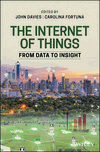Data Representation and Reasoning
Summary
Semantic technologies represent a promising approach to structured knowledge representation and reasoning. From a knowledge representation point of view, Internet of Things (IoT) is confronted with two main challenges associated with the use of data produced by interconnected Things – interoperability and integration. In order to support the evolution of IoT, this chapter introduces the IoT-O, providing the foundation for enabling interoperability and integration, and describes the digital twin approach, which enables the enhancing of physical IoT devices with auxiliary "digital" features. It also describes these two contributions within the scope of the Semantic Web of Things (SWoT) Reference Architecture. The chapter discusses three types of SWoT architecture participants: cloud resources, fog resources, and devices. Combining the concept of the digital twin with the provisioning of communication support enables the creation of SWoT-based architectural solutions, which enable the seamless participation of heterogeneous physical devices and software components in order to realize added-value applications.



